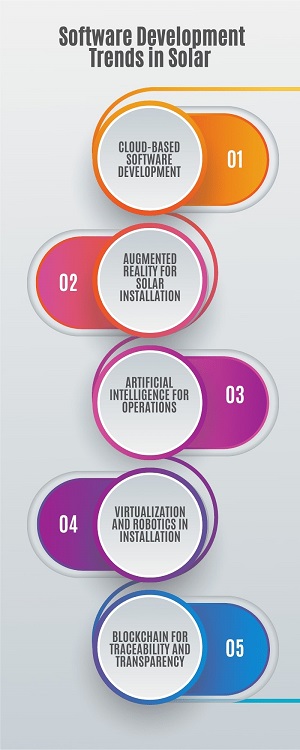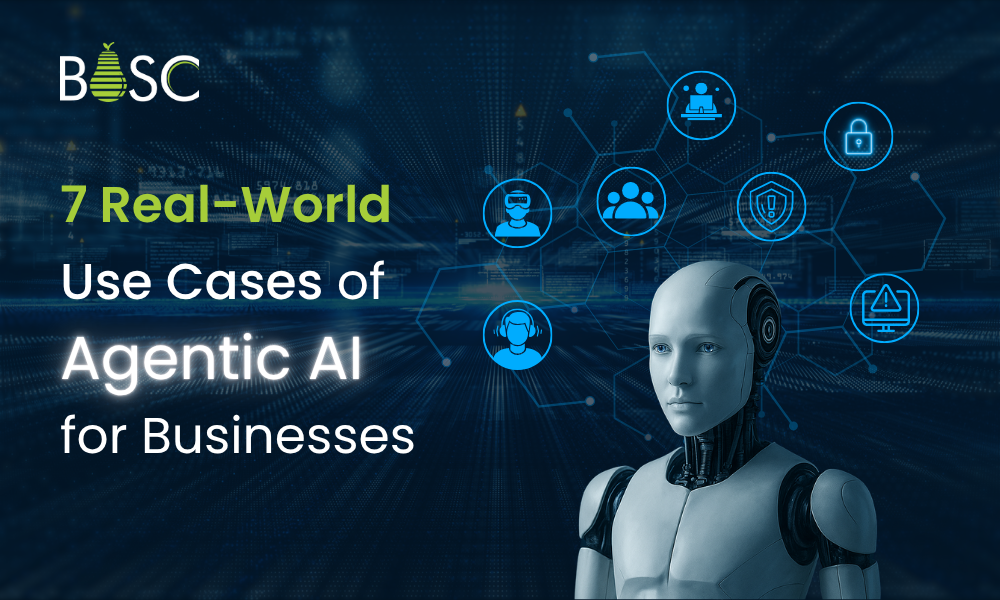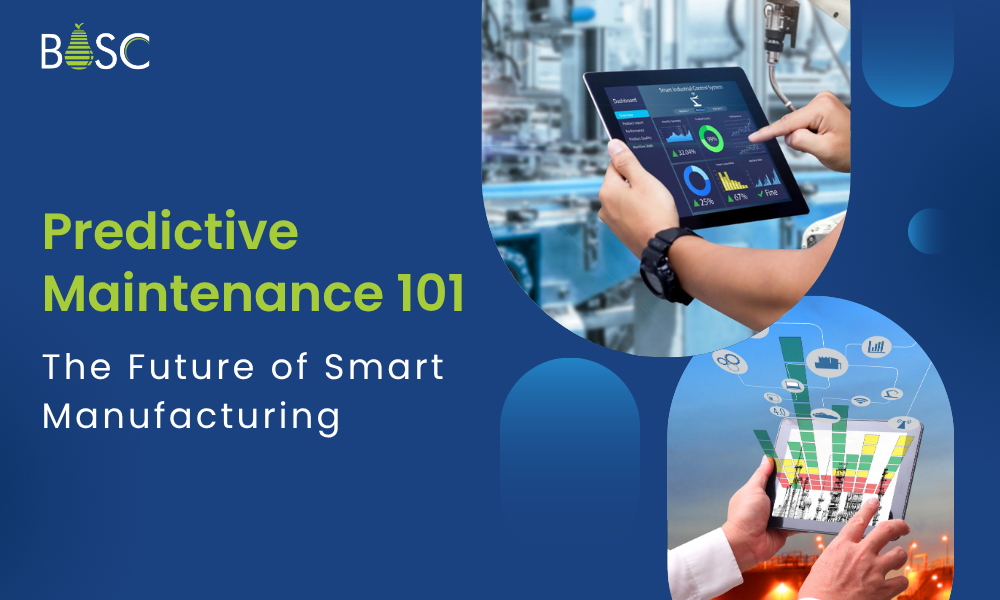Nowadays, one of the fastest-growing industries in the world is Solar. There is over 42GW worth of operational solar capacity in the US alone, and a new installation is coming online almost daily. To constantly view this growth in the industry, developers must find new ways to streamline efficiency and operations. However, several software future trends help solar companies to get where they need to be. This article will cover some of the leading software development trends in solar industry in 2023.
What is solar software?
Solar photovoltaic (PV) software is a design tool that supports solar development and engineering companies are planning their PV projects for optimal energy efficiency from the design phase to development.
Software packages also help organizations design layouts, optimize configuration, and track the cost of materials and installation. It creates energy consumption estimates and plans to implement an energy storage system.
However, a modeling functionality will save a company time and money with an accurate remote site assessment that allows them to assess a project site without leaving an office.
Developers, utilities, and other solar engineering companies encounter unique difficulties when project sizes grow when it comes to utility-scale installations.
What are the benefits of software development trends in solar?
Every business is now towards software development and in this solar is adopting the cutting-edge technologies of software to boom its industries. Let’s see their benefits which are related to software.
1. Environmental friendly
This type of energy has a clean and renewable source. However, by using solar energy, software development companies can deduct their carbon footprint and contribute to fighting climate change.
2. Reduce energy costs
Solar energy usage will significantly decrease energy costs for software development industries. Hence, by installing solar panels, organizations generate their electricity and reduce their dependence on traditional energy sources, which are too expensive.
3. Long-term cost savings
Solar panels have a huge lifespan and need minimal maintenance. Thus investing in solar energy, software companies can enjoy long-term cost savings on their energy bills.
4. Government incentives
Many governments deliver incentives for the adoption of solar energy. By taking benefit of these incentives, software companies can reduce the upfront costs of installing solar panels and accelerate a return on investment.
Also Read: Enterprise mobile app development complete guide 2022
Software Development Trends in Solar
Adopting custom software development in the solar industry is helping to drive innovation, scalability, transparency, and efficiency. It is expected to be a major trend in the coming years. Let’s see some of the trends in software development below.

1. Cloud-Based Software Development
It is the process of building and saving software on the internet server rather than on a single computer. In other words, industries use the cloud to store data, run apps and manage other business functions.
However, using cloud-based software trends, solar industries can save money on hardware and electricity costs since a cloud does not need much power or space. There are many security benefits to use cloud-based software development. It gives an organization an edge where quick research and product development is necessary. Hence, it allows multiple employees to access similar data from multiple computers.
2. Augmented Reality for Solar Installation
A person’s perception of the real world is overlaid by a computer-generated image using the technology known as augmented reality. In solar, Augmented Reality can be used as a way to assist installation crews via complicated installations. It is especially useful in areas with no preexisting grid to follow. Therefore, in an AR installation, crews can receive directions on where to place panels and how to install them. AR is used to show customers how the system will look before installation. Hence, it allows consumers to see its panels on the roof in a natural environment.
3. Artificial Intelligence for Operations
AI is a concept of machines that can perform the tasks that need human intelligence. In solar, AI could monitor equipment, make recommendations based on data, and troubleshoot issues. In the monitoring equipment, AI will track the performance and troubleshoot problems. AI predicts when equipment will fail and alerts the customer that they need to replace that part before it fails.
4. Virtualization and Robotics in Installation
Virtualization for solar installation means using software to run the system’s arts besides a hardware system. It saves money, time, and room on the roof. It also helps the companies scale up or down as required without purchasing additional hardware. Many companies use robotics for dollar installation. It speeds up an installation since humans will not need to climb ladders or anything else physically. Companies use automation for installation procedures.
5. Blockchain for Traceability and Transparency
Blockchain is a digital leader which records and verifies transactions. The network of computers verifies these transactions to make a” chain” of information that can not be altered retroactively. This develops transparency which is helpful in the future of the solar industry, where the consumers want to know where their panels were built. Solar companies could use blockchain technology to track the panels from the manufacturer and warehouse to a consumer’s roof.
It allows them to verify that their panels are made in a clean and safe environment. You can also track panels if there is a problem with the warranty. It is going to be helpful in natural disasters. Suppose a hurricane or any other disaster were to hit a solar installation. In that case, the insurance company can verify that the panels were manufactured in a safe environment to reduce claims.
Also Read: iOS 16.4: All the New Features to Update iPhone & iPad
Conclusion
Nowadays, one of the fastest-growing industries in the world is solar. To continue viewing this kind of growth in the industry, developers required new ways to streamline efficiency and operations. Several software development trends help solar companies to get where they need to be. However, by leveraging Robotics, AR, VR, AI, and blockchain technologies, software developers creating innovative solutions that are increasing the efficiency, reliability, transparency, and accessibility of solar energy.
Therefore, if you want to be on top of the latest software development trends and technologies, you can connect with a well-known software development company like Bosc Tech Labs, which will help you with every strategy and proper approach.
Frequently Asked Questions (FAQs)
1. Which software is used for a solar system design?
Solarius PV is professional software for the technical design and economic analysis of any kind of photovoltaic system connected to the national electricity grid, financial analysis, and sizing, which you can use in every circumstance and for all kinds of needs.
2. Why is solar technology expensive?
Producing it requires advanced manufacturing and expensive raw materials, like high-grade silicon for solar panels and lithium for solar batteries.
3. Will solar technology become more sustainable?
Solar energy will help steady energy prices and provides various social, environmental, and economic benefits. Solar energy’s contribution to achieving sustainable development has been indicated by meeting energy demands, creating jobs, and protecting the environment.
Book your appointment now




